I’m not a big believer in magic bullets. Everything he’s ever learned says that you’re only as strong as your weakest link. That’s why he’s always preached that the key to health is raising your entire Baseline of Health. But that said, he admits that what we’re talking about here today is a uniquely important anti-aging discovery.
The best place to start is at the beginning by addressing the question: what is aging? What makes us age? In fact, there are many factors that contribute to old age. Some, like joint degradation, happen at the macro level. Some, like free radical damage, happen at the micro level. And then, of course, there are hormonal changes. But of all the things that make us “old,” two stand out because, until recently, they have been so untouchable:
- The Hayflick Limit
- The glycation of proteins
The Hayflick Limit: Cell Lifespan and L. Carnosine
The Hayflick Limit is named after the person who discovered it almost 40 years ago. A quick description is that all cells have only a limited capacity to continue to divide through the course of our lives.1 “Hayflick Limit.” ScienceDirect. (Accessed 31 May 2018.) http://www.sciencedirect.com/topics/medicine-and-dentistry/hayflick-limit
Those numbers are different for each type of cell in our body, and by early adulthood, half of those divisions have been used up. By mid-life, maybe only 20-39% of those divisions are left. At that point, old age starts taking over — then death.
This limited capacity of a cell to perpetuate itself is called the Hayflick Limit. In effect, the Hayflick Limit determines life span at the cellular level. With each division, a cell becomes less likely to divide again, until finally it stops dividing altogether and becomes what we call senescent.
Cell senescence is the final step before cell death. Senescent cells are still alive and metabolically active, but they’re no longer capable of dividing. More importantly, though, senescent cells exhibit all the characteristics that so bother us about old age, such as the difference between the supple skin of a child and the wrinkled skin of the elderly.
How do cells age?
As cells approach the Hayflick Limit, they divide less frequently and become aberrant. They take on wildly irregular forms. They no longer line up in parallel arrays; they assume a granular appearance and deviate from their normal size and shape. This distorted appearance, called the senescent phenotype, is accompanied by a state of declining functionality that, until recently, was thought to be irreversible.
As it turns out, not only can we now reverse the aging process at the cellular level and do it quite simply and quickly — but we can also reverse aging at the system level and the organ level. And for that matter, we can reverse it in terms of how we look and feel — and by that we mean our skin and hair and energy levels. And then, of course, we can even reverse aging in terms of lifespan.
What’s the Secret?
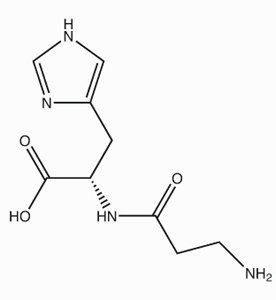 The nutraceutical I’m talking about is L-carnosine. It’s a naturally occurring combination of two amino acids, alanine and histidine, that was discovered in Russia in the early 1900s. Because much of the early research was done in Russia, it was largely unavailable in the United States for decades. Now, though, there have been many studies and experiments in other parts of the world verifying everything done in Russia — and more.
The nutraceutical I’m talking about is L-carnosine. It’s a naturally occurring combination of two amino acids, alanine and histidine, that was discovered in Russia in the early 1900s. Because much of the early research was done in Russia, it was largely unavailable in the United States for decades. Now, though, there have been many studies and experiments in other parts of the world verifying everything done in Russia — and more.
Most notably, there were a series of astonishing experiments done in Australia that proved that carnosine rejuvenates cells as they approach senescence. Cells cultured with carnosine lived longer and retained their youthful appearance and growth patterns.2 McFarland GA, Holliday R. “Retardation of the senescence of cultured human diploid fibroblasts by carnosine.” Exp Cell Res. 1994 Jun;212(2):167-75. http://www.ncbi.nlm.nih.gov/pubmed/8187813 , 3 McFarland GA, Holliday R. “Further evidence for the rejuvenating effects of the dipeptide L-carnosine on cultured human diploid fibroblasts.” Exp Gerontol. 1999 Jan;34(1):35-45. http://www.ncbi.nlm.nih.gov/pubmed/10197726
What’s probably the most exciting result of the studies is that it was discovered that carnosine can reverse the signs of aging in senescent cells.
The Reversal of Aging
When the scientists transferred senescent cells to a culture medium containing carnosine, those cells exhibited a rejuvenated appearance and often an enhanced capacity to divide. When they transferred the cells back to a medium lacking carnosine, the signs of senescence quickly reappeared.
As they switched the cells back and forth several times between the culture media, they consistently observed that the carnosine medium restored the juvenile cell phenotype within days, whereas the standard culture medium brought back the senescent cell phenotype.4 McFarland. Retardation.
Increase Cell Life
In addition, the carnosine medium increased cell life span — even for old cells. When the researchers took old cells that had already gone through 55 divisions and transferred them to the carnosine medium, they survived up to 70 divisions, compared to only 57 to 61 divisions for the cells that were not transferred.
This represents an increase in the number of cell divisions for each cell of almost 25%.
But in terms of cell life, the increase was an astounding 300%. The cells transferred to the carnosine medium attained a life span of 413 days, compared to just 126 to 139 days for the control cells.
Increase Life Expectancy
This is mind-boggling. But so far, all we’ve talked about are cells. What does carnosine mean for actual life expectancy?
A more recent Russian study has shown that mice given carnosine are twice as likely to reach their maximum lifespan as untreated mice.5 Gallant S, Semyonova M, Yuneva M. “Carnosine as a potential anti-senescence drug.” Biochemistry (Mosc). 2000 Jul;65(7):866-8. http://protein.bio.msu.ru/biokhimiya/contents/v65/full/65071018.html The carnosine also significantly reduced the outward “signs of old age.”6 Boldyrev AA, Gallant SC, Sukhich GT. “Carnosine, the protective, anti-aging peptide.” Biosci Rep. 1999 Dec;19(6):581-7. http://www.ncbi.nlm.nih.gov/pubmed/10841274
In effect, it made the mice look younger. 44% of the carnosine treated mice had young, glossy coats in old age as opposed to only 5% in the untreated mice. This represents 900% better odds of looking young in old age.
Feel Young Again
Another important difference between the treated and the untreated mice was in their behavior. Only 9% of the untreated mice behaved youthfully in old age, versus 58% of the carnosine treated mice. That’s a 600% improvement in how they felt.
Strong Antioxidant
Quite simply, carnosine is one of the most powerful antioxidants known. It’s a great heavy-metal scavenger. It’s a powerful auto-regulator. And it stands alone when it comes to preventing and reversing protein glycation or cross-linking (more on this in a moment).
Auto-Regulator
Carnosine has the remarkable ability to throttle down bodily processes that are in a state of excess, and to ramp up those that are under expressed.
For example, carnosine thins the blood of people whose blood tends to clot too much and increases the clotting tendency in those with a low clotting index.
Another example is that carnosine suppresses excess immune responses (specifically, neutrophil function) in those who have “hyper” immune systems, whereas it stimulates the response in those with weakened immune systems — such as the aged.7 Tan, K.M., Candlish, J.K. “Carnosine and anserine as modulators of neutrophil function.” Clin. Lab. Haematol. 1998 Aug; 20(4): 239-44. http://www.researchgate.net/publication/13509482_Carnosine_and_anserine_as_modulators_of_neutrophil_function
And carnosine even seems to have the ability to normalize brain wave functions.
Protein Glycation: Sugar and Aging
 Glycation is the uncontrolled reaction of sugars with proteins. It’s kind of like what happens to sugars when you heat them and they caramelize. In effect, glycation is what happens when excess sugars caramelize the proteins in your body. It’s a major factor in the aging process — and it’s particularly devastating to diabetics.
Glycation is the uncontrolled reaction of sugars with proteins. It’s kind of like what happens to sugars when you heat them and they caramelize. In effect, glycation is what happens when excess sugars caramelize the proteins in your body. It’s a major factor in the aging process — and it’s particularly devastating to diabetics.
Your body is mostly made up of proteins. In fact, proteins are the substances most responsible for the daily functioning of your body. That’s why anything that causes protein deterioration has such a dramatic impact on the body’s function and appearance.
Thanks largely to the destructive effect of sugar and aldehydes, the protein in our bodies tends to undergo destructive changes as we age. This destruction is a prime factor, not only in the aging process itself, but also in the familiar signs of aging such as wrinkling skin, cataracts, and the destruction of our nervous system — particularly our brains. Studies show that carnosine is effective against all these forms of protein modification.8 Hipkiss AR. “Carnosine, a protective, anti-ageing peptide?” Int J Biochem Cell Biol. 1998 Aug;30(8):863-8. http://www.ncbi.nlm.nih.gov/pubmed/9744078
Protein Modification for Longevity
As previously stated, aging is associated with damage to cellular proteins. But carnosine protects cellular proteins from damage in at least two ways.
- First, it bonds with the carbonyl (or aldehyde) groups that if left alone will attack and bind with proteins.
- Second, it works as an antioxidant to prevent the formation of oxidized sugars, also called Advanced Glycosylation End-products or AGEs for short.9 “Advanced glycation end-product.” ScienceDirect. (Accessed 1 Jun 2018.) http://www.sciencedirect.com/topics/medicine-and-dentistry/advanced-glycation-end-product That’s really the caramelization thing that we mentioned earlier. In more technical terms, the mechanism by which AGEs induce damage is through a process called cross-linking that causes intracellular damage and cell death.10 Shaikh S, Nicholson LF. “Advanced glycation end products induce in vitro cross-linking of alpha-synuclein and accelerate the process of intracellular inclusion body formation.” J Neurosci Res. 2008 Jul;86(9):2071-82. http://www.ncbi.nlm.nih.gov/pubmed/18335520 The bottom line here is that the less AGEs, in your body, the younger you are.
Both these processes have important implications for anti-aging therapy. The key is that carnosine not only prevents damaging cross-links from forming, it eliminates cross-links that have previously formed in proteins, thus restoring normal membrane function.11 Hipkiss AR, Michaelis J, Syrris P. “Non-enzymatic glycosylation of the dipeptide L-carnosine, a potential anti-protein-cross-linking agent.” FEBS Lett. 1995 Aug 28;371(1):81-5. http://febs.onlinelibrary.wiley.com/doi/epdf/10.1016/0014-5793%2895%2900849-5
Alzheimer’s
Carnosine has been proven to reduce or completely prevent cell damage caused by beta amyloid, one of the prime protein risk factors for Alzheimer’s. The presence of beta amyloid leads to damage of the nerves and arteries of the brain. Carnosine blocks and inactivates beta amyloid. In effect, it protects neural tissues against dementia. The key, as we’ve already seen, is that carnosine not only prevents damaging cross-links from forming in proteins, it eliminates cross-links that have previously formed in those proteins, thus restoring normal membrane function in cells. This is true not only in the brain, but in all the organs of our body — our skin included. Keep in mind that the damage you see in the skin is not just a cosmetic issue. That damage is absolutely an indicator of the kinds of damage happening to every other organ in your body — including your eyes and your brain.
The Reversal of Age
While it is true that many people who supplement with carnosine are going to notice everything from younger looking skin to more energy, the bottom line is that you really shouldn’t look for any short-term benefits from carnosine supplementation. If any short-term benefits are noticed, you should consider them a bonus. The reason you want to supplement with carnosine is for the long-term, not for the short-term benefits that you may or may not notice. You supplement with carnosine to protect against the long-term ravages of aging.
Carnosine levels in our body directly correlate with both the length and quality of our lives. And since carnosine levels decline with age, supplementation with carnosine represents one of the most powerful things you can do to hold back the ravages of old age.

Carnosine Studies 2013-2014
Most recent studies involving carnosine have no direct connection with anti-aging, which is difficult for researchers to quantify. Instead, now that carnosine is considered “real” by the scientific community, the studies tend to be much more specific–and quantifiable–with an emphasis on the role carnosine supplementation can play in reversing things like cardiovascular disease, cancer, and dementia. What makes these studies especially interesting is that although they involve measuring benefits in specific areas of the body, those benefits can easily be extrapolated to the body as a whole, thus serving as confirmation of carnosine’s overall anti-aging benefits. Here’s a sampling.
Carnosine Benefits and Your Cardiovascular System
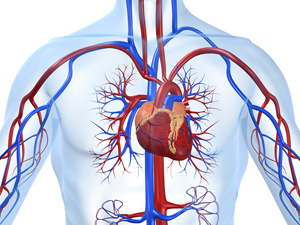 As we just discussed, carnosine has been shown to modulate triglyceride and glycation levels in both cell and animal systems. But a 2014 study took things one step further when it concluded that long term supplementation with carnosine may, in fact, lower triglyceride levels and thus suppress plaque instability in diabetes-associated atherosclerosis.12 Brown BE, Kim CH, Torpy FR, Bursill CA,et al. “Supplementation with carnosine decreases plasma triglycerides and modulates atherosclerotic plaque composition in diabetic apo E(-/-) mice.” Atherosclerosis. 2014 Feb;232(2):403-9. http://www.ncbi.nlm.nih.gov/pubmed/24468155
As we just discussed, carnosine has been shown to modulate triglyceride and glycation levels in both cell and animal systems. But a 2014 study took things one step further when it concluded that long term supplementation with carnosine may, in fact, lower triglyceride levels and thus suppress plaque instability in diabetes-associated atherosclerosis.12 Brown BE, Kim CH, Torpy FR, Bursill CA,et al. “Supplementation with carnosine decreases plasma triglycerides and modulates atherosclerotic plaque composition in diabetic apo E(-/-) mice.” Atherosclerosis. 2014 Feb;232(2):403-9. http://www.ncbi.nlm.nih.gov/pubmed/24468155
And there’s more.
Atherosclerotic lesions are also associated with the accumulation of reactive aldehydes formed from the oxidation of fats in the bloodstream. But carnosine helps here too. A study published in 2013 suggests that carnosine inhibits atherogenesis (the formation of arterial plaque) by facilitating aldehyde removal from atherosclerotic lesions.13 Barski OA, Xie Z, Baba SP, Sithu SD, et al. “Dietary carnosine prevents early atherosclerotic lesion formation in apolipoprotein E-null mice.” Arterioscler Thromb Vasc Biol. 2013 Jun;33(6):1162-70. http://www.ncbi.nlm.nih.gov/pubmed/23559625 This should not be a surprise as we just discussed that one of the primary benefits of carnosine is that it bonds with carbonyl (or aldehyde) groups that if left alone attack and bind with proteins–thus destroying them. According to this study, deep tissue levels of carnosine may be an important determinant of atherosclerotic lesion formation, and treatment with carnosine could be a useful therapy for the prevention–or the treatment of–atherosclerosis.
Carnosine Benefits and Cancer
 Back in 2012, I reported on studies that showed that carnosine protects against genetic structure damage caused by the chemotherapy drug cyclophosphamide. This is significant because cyclophosphamide is one of the most widely used chemotherapy drugs in treating cancers. But there’s another problem with cyclophosphamide beyond its tendency to destroy DNA: it suppresses the ability of the body to create new blood cells. It makes you anemic. Well, more recent studies have found that carnosine has the potential to promote recovery from the blood building suppression induced by cyclophosphamide, as well as other chemotherapy agents, and that it can substantially improve the overall anti-tumor effects of the standard chemotherapies.14 Xu M1, He RR, Zhai YJ, Abe K, Kurihara H. “Effects of carnosine on cyclophosphamide-induced hematopoietic suppression in mice.” Am J Chin Med. 2014;42(1):131-42. http://www.ncbi.nlm.nih.gov/pubmed/24467540
Back in 2012, I reported on studies that showed that carnosine protects against genetic structure damage caused by the chemotherapy drug cyclophosphamide. This is significant because cyclophosphamide is one of the most widely used chemotherapy drugs in treating cancers. But there’s another problem with cyclophosphamide beyond its tendency to destroy DNA: it suppresses the ability of the body to create new blood cells. It makes you anemic. Well, more recent studies have found that carnosine has the potential to promote recovery from the blood building suppression induced by cyclophosphamide, as well as other chemotherapy agents, and that it can substantially improve the overall anti-tumor effects of the standard chemotherapies.14 Xu M1, He RR, Zhai YJ, Abe K, Kurihara H. “Effects of carnosine on cyclophosphamide-induced hematopoietic suppression in mice.” Am J Chin Med. 2014;42(1):131-42. http://www.ncbi.nlm.nih.gov/pubmed/24467540
So, why is this important to you–assuming you don’t have cancer at the moment?
Because cancer and old age are not dissimilar. They both involve the relentless diminishing of cellular DNA, cellular integrity, and ultimately cellular function. The fact that carnosine can protect against this tri-headed assault when your body is confronted by some of the most toxic drugs known attests to its ability to protect against the same kind of assault presented by simple aging.
Meanwhile, a 2014 study published in the journal Amino Acids looked at just how carnosine might inhibit the growth of tumor cells.15 Hipkiss AR1, Gaunitz F. “Inhibition of tumour cell growth by carnosine: some possible mechanisms.” Amino Acids. 2014 Feb;46(2):327-37. http://www.ncbi.nlm.nih.gov/pubmed/24292217 Possibilities include effects on:
- Glycolytic enzymes
- Metabolic regulatory activities
- Redox biology
- Protein glycation
- Glyoxalase activity
- Apoptosis
- Gene expression
- Metastasis
The authors stated that it is possible, by acting at various sites, that this “pluripotent dipeptide” [their exact words] might be an example of an internally produced “smart drug” [again, their exact words].
And finally, a study published in Andrologia found that carnosine can protect against both the damage and dysfunction caused to cells by exposure to radiation.16 Haeri SA1, Rajabi H, Fazelipour S, Hosseinimehr SJ. “Carnosine mitigates apoptosis and protects testicular seminiferous tubules from gamma-radiation-induced injury in mice.” Andrologia. 2013 Nov 12. http://www.ncbi.nlm.nih.gov/pubmed/24215656 Specifically, the study found that carnosine protects against the cellular dysfunction caused by testicular cell exposure to gamma-irradiation, ultimately even restoring the ability of those same cells to produce sperm. That’s astounding, as are its implications for carnosine’s ability to protect against the cellular dysfunctions associated with simple aging–as well as its ability to restore function where it may have been lost.
Carnosine Benefits for Your Brain and Nervous System
 Brain damage from reduced blood flow to the brain in infants from about three months before birth to one month after (hypoxia-ischemia brain damage or HIBD) is a major cause of mortality and morbidity in neonates. Currently, there is no effective therapy for HIBD. But studies published in the European Journal of Pharmacology show that carnosine can indeed reduce brain damage in such situations.17 Zhang H, Guo S, Zhang L, Jia L, et al. “Treatment with carnosine reduces hypoxia-ischemia brain damage in a neonatal rat model.” Eur J Pharmacol. 2014 Jan 23. pii: S0014-2999(14)00024-7. http://www.ncbi.nlm.nih.gov/pubmed/24463179 Coupled with previous studies that have demonstrated the neuroprotective role carnosine can play when it comes to adult brain damage, it’s not hard to see why carnosine supplementation has built a reputation as one of the best things you can do to reduce your chances of succumbing to Alzheimer’s disease and dementia.
Brain damage from reduced blood flow to the brain in infants from about three months before birth to one month after (hypoxia-ischemia brain damage or HIBD) is a major cause of mortality and morbidity in neonates. Currently, there is no effective therapy for HIBD. But studies published in the European Journal of Pharmacology show that carnosine can indeed reduce brain damage in such situations.17 Zhang H, Guo S, Zhang L, Jia L, et al. “Treatment with carnosine reduces hypoxia-ischemia brain damage in a neonatal rat model.” Eur J Pharmacol. 2014 Jan 23. pii: S0014-2999(14)00024-7. http://www.ncbi.nlm.nih.gov/pubmed/24463179 Coupled with previous studies that have demonstrated the neuroprotective role carnosine can play when it comes to adult brain damage, it’s not hard to see why carnosine supplementation has built a reputation as one of the best things you can do to reduce your chances of succumbing to Alzheimer’s disease and dementia.
In fact, it looks like carnosine offers the same kind of protection to every nerve cell in your body, not just brain cells. A study published in Current Eye Research found that carnosine can protect nerve cells in your eyes, for example, from damage caused by reduced blood flow to cells in the retina.18 Ji YS, Park JW, Heo H, Park JS, Park SW. “The Neuroprotective Effect of Carnosine (ß-Alanyl-l-Histidine) on Retinal Ganglion Cell Following Ischemia-Reperfusion Injury.”Curr Eye Res. 2013 Nov 8. http://www.ncbi.nlm.nih.gov/pubmed/24206188
And a study published in PLoS One found that carnosine’s ability to break up alpha-crystallin amyloid fibrils is most likely associated with carnosine’s ability to inhibit the amyloid induced cytotoxicity of human neuronal cells, thereby reducing cell deaths in your brain.19 Wu JW, Liu KN, How SC, Chen WA, et al. “Carnosine’s Effect on Amyloid Fibril Formation and Induced Cytotoxicity of Lysozyme.” PLoS One. 2013 Dec 11;8(12):e81982. http://www.ncbi.nlm.nih.gov/pmc/articles/PMC3859581/ Amyloid diseases, including hemodialysis amyloidosis, type II diabetes, Parkinson’s disease, transmissible spongiform encephalopathies, Huntington’s disease, and Alzheimer’s disease, are all characterized by the formation of insoluble deposits (aka, amyloid fibrils) in certain tissues and organs. The bottom line is that a constant stream of studies now indicates that if you don’t want to take supplemental carnosine to “look” younger and live longer, you will absolutely want to take it to better your odds of avoiding Alzheimer’s and a whole host of other amyloid related diseases.
This echoes another study, also published in PLoS One, that suggested that carnosine could play an effective role against the formation of fibrils/aggregates of the amyloidogenic peptide fragment Aβ1-42, which is also a major hallmark of Alzheimer’s disease injury.20 Aloisi A1, Barca A, Romano A, Guerrieri S, et al. “Anti-aggregating effect of the naturally occurring dipeptide carnosine on aß1-42 fibril formation.” PLoS One. 2013 Jul 3;8(7):e68159. http://www.ncbi.nlm.nih.gov/pmc/articles/PMC3700870/
But again, it’s not just dementia. An analytical paper published in 2013 indicated that carnosine could play a role in protecting against a range of age related diseases of the nervous system such as Parkinson’s.21 Hipkiss AR. “Aging risk factors and Parkinson’s disease: contrasting roles of common dietary constituents.” Neurobiol Aging. 2013 Dec 4. pii: S0197-4580(13)00616-7. http://www.ncbi.nlm.nih.gov/pubmed/24388766 Keep in mind that aging is a known risk factor for Parkinson’s disease. Specifically, there is evidence that indicates that excessive carbohydrate (glucose or fructose) catabolism is a factor in causing the mitochondrial dysfunction seen in Parkinson’s. One consequence of this dysfunction is an increased production of methylglyoxal (MG), an advanced glycation end product. But carnosine can not only scavenge MG but can also influence some of the biochemical events (signal transduction, stress protein synthesis, glycation, and toxin generation) associated with Parkinson’s pathology.
Miscellaneous Carnosine Benefits
 An article appearing in the Sep-Oct 2013 issue of Advances in Clinical and Experimental Medicine concluded that due to its antioxidant, protective, chelating, and anti-glycation activity, carnosine could be used to prevent and treat diseases such as diabetes, neurodegenerative diseases, diseases of the sense organs, and even cancers.22 Budzen S1, Rymaszewska J. “The biological role of carnosine and its possible applications in medicine.” Adv Clin Exp Med. 2013 Sep-Oct;22(5):739-44. http://www.advances.am.wroc.pl/pdf/2013/22/5/739.pdf It may also cure or alleviate many other disorders thanks to its wide spectrum of activity. The authors noted that carnosine is already used by athletes to achieve better results, due to its buffering feature, which contributes to the maintenance of the acid-base balance in the muscles. And they stated that future studies on the influence of carnosine on the human organism may lead to the therapeutic use of this dipeptide for many diseases, in addition to improving both amateur and professional athletes’ results.
An article appearing in the Sep-Oct 2013 issue of Advances in Clinical and Experimental Medicine concluded that due to its antioxidant, protective, chelating, and anti-glycation activity, carnosine could be used to prevent and treat diseases such as diabetes, neurodegenerative diseases, diseases of the sense organs, and even cancers.22 Budzen S1, Rymaszewska J. “The biological role of carnosine and its possible applications in medicine.” Adv Clin Exp Med. 2013 Sep-Oct;22(5):739-44. http://www.advances.am.wroc.pl/pdf/2013/22/5/739.pdf It may also cure or alleviate many other disorders thanks to its wide spectrum of activity. The authors noted that carnosine is already used by athletes to achieve better results, due to its buffering feature, which contributes to the maintenance of the acid-base balance in the muscles. And they stated that future studies on the influence of carnosine on the human organism may lead to the therapeutic use of this dipeptide for many diseases, in addition to improving both amateur and professional athletes’ results.
On a different note, it has been proposed that human blood platelet monoamine oxidase (MAO) activity is a biological marker of vulnerability to a variety of psychiatric diseases. Its activity is significantly inhibited as a result of aging, thus increasing the risk of problems as we age. A study published in the Journal of Physiological Sciences found that this age-induced inhibition of platelet MAO-A activity is reversed in as little as 21 days following the application of sufficient dosages of carnosine.23 Banerjee S1, Poddar MK. “Platelet monoamine oxidase-A activity and aging: effect of carnosine.” J Physiol Sci. 2013 Jul;63(4):279-85. http://www.ncbi.nlm.nih.gov/pubmed/23657886 The study concluded that these results suggest that carnosine withdraws the aging-induced inhibition of mammalian blood platelet MAO-A activity and restores its activity towards that observed in young mammalian blood platelets. It seems that carnosine pushes the clock on aging back anywhere and everywhere we look in the body.
Perhaps the best example to end with is another analytical paper published in the Chemistry Central Journal that noted that carnosine has contrasting but beneficial effects on cellular activity.24 Hipkiss AR, Cartwright SP, Bromley C, Gross SR, Bill RM. “Carnosine: can understanding its actions on energy metabolism and protein homeostasis inform its therapeutic potential?” Chem Cent J. 2013 Feb 25;7(1):38. http://www.ncbi.nlm.nih.gov/pmc/articles/PMC3602167/ As mentioned earlier, carnosine delays cellular senescence and rejuvenates cultured senescent mammalian cells. The paper then went on to explain that studies have now also confirmed that carnosine inhibits the growth of cultured tumor cells as well. Based on studies in several organisms, the authors speculated that carnosine exerts these apparently opposing actions by affecting energy metabolism and/or protein homeostasis (proteostasis). Specific effects on energy metabolism include the dipeptide’s influence on cellular ATP concentrations. Carnosine’s ability to reduce the formation of altered proteins after exposure to methylglyoxal (see three paragraphs above) and enhance the breakdown of aberrant polypeptides is indicative of its ability to help maintain protein integrity throughout the body.
What makes this paper so special is the breadth of its conclusions as they cover virtually every disease commonly associated with aging. Quoting from the paper:
“Furthermore, these dual actions might provide a rationale for the use of carnosine in the treatment or prevention of diverse age-related conditions where energy metabolism or proteostasis are compromised. These include cancer, Alzheimer’s disease, Parkinson’s disease and the complications of type-2 diabetes (nephropathy, cataracts, stroke and pain), which might all benefit from knowledge of carnosine’s mode of action on human cells.”
Using Carnosine
Some experts recommend using only 50-100 mg of carnosine a day. Others say that if you don’t take 1,000-1,500 mg a day it won’t work because your body metabolizes the first 500 mg or so.
The key here is that all these experts are ignoring the simple fact that different people need different amounts. For example:
- The older you get, the more you need.
- If you eat a mostly vegetarian diet, you need more.
- If you’re diabetic, or just have trouble with blood sugar, you need more.
Over time, I’ve found that most people will do best on 500-750 mg a day.
If you’re young and healthy and include meat in your diet, then 250 mg a day makes sense. As you get older, and if you’re starting to show signs of aging or glycation (such as cataracts or aging skin), then you’d want to think of increasing the dosage up to 1,000 mg a day — maybe even as high as 1,500 mg a day.
Safety
In studies, carnosine has been proven safe in amounts as high as 70, 80, or even 100 grams a day, although a small number of people have noticed some minor muscle twitching at doses as small as 1,000 mg. The bottom line is use what you need, and you won’t have any problems — only benefits.
Importance
Once you understand what carnosine does — once you understand the role it plays in preventing and potentially reversing all of the signs of old age in the body (and we’re talking about everything from wrinkled skin to cataracts to Alzheimer’s) — heck, once you understand the role it plays in extending life itself — then you’re left with the unmistakable conclusion that supplementing with carnosine may represent one of the single best things you can do to help “turn back your biological clock.”
Lipofuscin, the Fly in the Ointment
As important as carnosine is, there is a “gap” in its usefulness. It’s called lipofuscin.
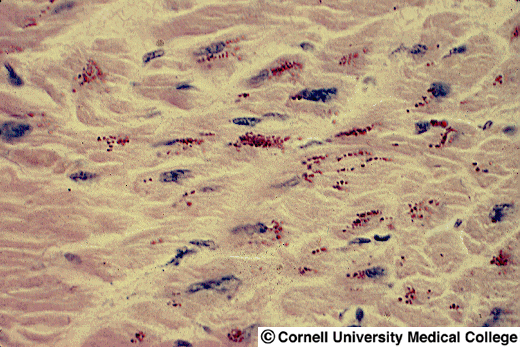
Lipofuscin deposits as seen in heart muscle
Lipofuscin is the pigment commonly found in aging brains and in other tissue such as the skin (think liver spots). By itself, it is not dangerous. It is merely a byproduct of harmful reactions that have already taken place. For example, one of the byproducts of free radical damage and protein/aldehyde damage (both conditions that carnosine addresses) is lipofuscin.
When you supplement with carnosine, however, something different happens. The carnosine quickly binds with the aldehydes, preventing them from damaging the proteins in your body. The byproduct of this reaction is also lipofuscin. So once again, you have inactive lipofuscin compounds, but this time as the result of PREVENTING protein damage. In a sense, with carnosine, you trade protein damage for lipofuscin.
Again, by itself, lipofuscin is not harmful. However, if enough of it accumulates over time (and this process is accelerated when you supplement with carnosine), it can interfere with proper cellular and organ functions. So, the bottom line is that however it is produced (as a result of protein damage, or as the result of taking sacrificial carnosine to prevent protein damage), you want to minimize it. Which leads us to a discussion of DMAE and Acetyl-L-Carnitine.
DMAE (Dimethylaminoethanol)
By any definition, DMAE is the perfect complement to carnosine in an anti-aging formulation. First, it reinforces carnosine’s own anti-aging properties. Then, it provides a whole series of complementary benefits of its own.
Also referred to as deanol and centrophenoxine (technically an ester of DMAE), dimethylaminoethanol is a naturally-occurring nutrient found in fish that enhances acetylcholine synthesis. Adequate levels of acetylcholine are important for proper memory function. Normally found in small amounts in our brains, DMAE has been shown to remarkably enhance brain function when used as a supplement (taken as laboratory produced DMAE bitartrate) in clinical studies.25 Danysz A, Smietanski J, Panek W. “The influence of 2-dimethylaminoethanol (DMAE) on the mental and physical efficiency in man.” Act Nerv Super (Praha). 1967 Nov;9(4):417. http://www.ncbi.nlm.nih.gov/pubmed/5612961
DMAE Reinforces Carnosine
 One of the prime actions of DMAE is that it flushes accumulated lipofuscin from your body — from the neurons in your brain, from your skin, and from all other organs.26 Dylewski DP, Nandy S, Nandy K. “Effects of centrophenoxine on lipofuscin in the retinal pigment epithelium of old mice.” Neurobiol Aging. 1983;4(1):89-95. http://www.ncbi.nlm.nih.gov/pubmed/6410295 , 27 Riga S, Riga D. “Effects of centrophenoxine on the lipofuscin pigments in the nervous system of old rats.” Brain Res. 1974 Jun 7;72(2):265-75. http://www.ncbi.nlm.nih.gov/pubmed/4151704 It also complements carnosine in that DMAE on its own has been shown to inhibit and reverse the cross-linking of proteins and extend lifespan.28 Nagy I, Nagy K (1980). “On the role of cross-linking of cellular proteins in aging.” Mechanisms of Ageing and Development. 14 (1–2): 245–51. http://www.ncbi.nlm.nih.gov/pubmed/7206814
One of the prime actions of DMAE is that it flushes accumulated lipofuscin from your body — from the neurons in your brain, from your skin, and from all other organs.26 Dylewski DP, Nandy S, Nandy K. “Effects of centrophenoxine on lipofuscin in the retinal pigment epithelium of old mice.” Neurobiol Aging. 1983;4(1):89-95. http://www.ncbi.nlm.nih.gov/pubmed/6410295 , 27 Riga S, Riga D. “Effects of centrophenoxine on the lipofuscin pigments in the nervous system of old rats.” Brain Res. 1974 Jun 7;72(2):265-75. http://www.ncbi.nlm.nih.gov/pubmed/4151704 It also complements carnosine in that DMAE on its own has been shown to inhibit and reverse the cross-linking of proteins and extend lifespan.28 Nagy I, Nagy K (1980). “On the role of cross-linking of cellular proteins in aging.” Mechanisms of Ageing and Development. 14 (1–2): 245–51. http://www.ncbi.nlm.nih.gov/pubmed/7206814
Many Baby Boomers have heard of the anti-aging results that Romanian scientist, Ana Aslan, achieved using something called GH3, or procaine. What most people do not know is that GH3 breaks down in the body to form DMAE (after first metabolizing into DEAE) and PABA. In other words, DMAE is the key active component in Ana Aslan’s anti-aging formula.
Numerous scientific studies now show that DMAE can help:
- Increase both acetylcholine levels and RNA levels in the brain29 Malanga G, Aguiar MB, Martinez HD, Puntarulo S. “New insights on dimethylaminoethanol (DMAE) features as a free radical scavenger.” Drug Metab Lett. 2012 Mar;6(1):54-9. http://www.ncbi.nlm.nih.gov/pubmed/22300295
- Increases intelligence30 Danysz A, Smietanski J, Panek W. “The influence of 2-dimethylaminethanol (DMAE) on the mental and physical efficiency in man.” Act Nerv Super (Praha). 1967 Nov;9(4):417. http://www.ncbi.nlm.nih.gov/pubmed/5612961
- Stimulate mental activity
- Increase attention span
- Increase alertness
- Improve learning and memory
- Increase energy levels
- Provide a mild, safe tonic effect
- Stimulate the central nervous system
- Relieve anxiety
- Elevate mood in general
- Alleviate behavioral problems and hyperactivity associated with Attention Deficit Hyperactivity Disorder31 Lewis JA, Young R. “Deanol and methylphenidate in minimal brain dysfunction.” Clin Pharmacol Ther. 1975 May;17(5):534-40. http://www.ncbi.nlm.nih.gov/pubmed/1092513
- Increase motivation and reduce apathy in persons suffering from depression
- Induce sounder sleep
- Over time reduce the amount of sleep required by about 1 hour per night
- Intensify dreams tremendously and cause them to become more lucid.32 Sergio W. “Use of DMAE (2-dimethylaminoethanol) in the induction of lucid dreams.” Med Hypotheses. 1988 Aug;26(4):255-7. http://www.ncbi.nlm.nih.gov/pubmed/3173167 (Even more so when you take it along with a large dose of phosphatidyl choline — a key component of lecithin)
- Increase willpower
- Decrease the incidence and severity of hangovers in people who consume excessive amounts of alcohol
DMAE Is Safe
Clinical studies of DMAE have used up to 1,600 mg per day with no reports of side effects. In some cases, some people may experience slight headaches, muscle tension, or insomnia if they take too much too soon.
These effects are easily eliminated if intake is reduced and then gradually increased. Although there is no direct connection, many manufacturers recommend that women who are pregnant or breast-feeding, or anyone who suffers from convulsions, epilepsy, or seizure disorders, and people with manic-depressive illness should avoid using DMAE.
This is probably more of a legal issue than a medical issue.
Acetyl-L-Carnitine
Like DMAE, acetyl-L-carnitine is a perfect complement to L-carnosine.
Although your body can synthesize L-carnitine in the liver, it depends on outside sources (meat being a primary source) to fulfill its requirements. This can present a problem for vegetarians since L-carnitine performs several key functions in the human body. For one, it can improve the functioning of the immune system by enhancing the ability of macrophages to function as phagocytes. And it can improve the functioning of muscle tissue. In fact, it has been shown to increase running speed when given prior to exercise. It also plays a major factor in cellular energy production by shuttling fatty acids from the main cell body into the mitochondria (the cell’s energy factories) so that the fats can be oxidized for energy. Without carnitine, fatty acids cannot easily enter the mitochondria.
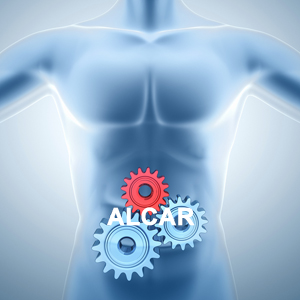 There is, however, a specialized form of L-carnitine known as acetyl-L-carnitine (ALCAR) that is produced in the body and is often deficient even in meat eaters and that performs virtually all the same functions — but better. For example, in terms of cellular energy production, in addition to shuttling fatty acids into cell mitochondria, ALCAR provides acetyl groups from which Acetyl-Coenzyme A (a key metabolic intermediate) can be regenerated, thereby facilitating the transport of metabolic energy and boosting mitochondrial activity. But beyond that, the addition of the acetyl group makes ALCAR water soluble, which enables it not only to diffuse easily across the inner wall of the mitochondria but also to cross all cell membranes more easily. In other words, ALCAR reaches parts of the body where L-carnitine cannot go. In particular, ALCAR readily crosses the blood/brain barrier, where it provides several specialized neurological functions. For example, it can:
There is, however, a specialized form of L-carnitine known as acetyl-L-carnitine (ALCAR) that is produced in the body and is often deficient even in meat eaters and that performs virtually all the same functions — but better. For example, in terms of cellular energy production, in addition to shuttling fatty acids into cell mitochondria, ALCAR provides acetyl groups from which Acetyl-Coenzyme A (a key metabolic intermediate) can be regenerated, thereby facilitating the transport of metabolic energy and boosting mitochondrial activity. But beyond that, the addition of the acetyl group makes ALCAR water soluble, which enables it not only to diffuse easily across the inner wall of the mitochondria but also to cross all cell membranes more easily. In other words, ALCAR reaches parts of the body where L-carnitine cannot go. In particular, ALCAR readily crosses the blood/brain barrier, where it provides several specialized neurological functions. For example, it can:
- Facilitate both the release and synthesis of acetylcholine, a key brain biochemical.
- Increase the brain’s levels of choline acetyltransferase (the enzyme responsible for the synthesis of acetylcholine)33 Ferreira GC, McKenna MC. “L-Carnitine and Acetyl-L-carnitine Roles and Neuroprotection in Developing Brain.” Neurochem Res. 2017 Jun;42(6):1661-1675. http://www.ncbi.nlm.nih.gov/pmc/articles/PMC5621476/
- Enhance the release of dopamine and improve the binding of dopamine to dopamine receptors34 Ferreira
- Protect the neurons of the optic nerve and the occipital cortex of the brain35 Ferreira
In addition, studies have shown that acetyl-L-carnitine can inhibit the deterioration in mental function associated with Alzheimer’s disease and slow its progression.36 Carta A, Calvani M, Bravi D, Bhuachalla SN. “Acetyl-L-carnitine and Alzheimer’s disease: pharmacological considerations beyond the cholinergic sphere.” Ann N Y Acad Sci. 1993 Sep 24;695:324-6. http://www.ncbi.nlm.nih.gov/pubmed/8239306 Part of this is a result of its ability to shield neurons from the toxicity of beta amyloid protein. As a result:
- ALCAR improves alertness in Alzheimer’s patients.
- Improves attention span.
- And it increases short term memory.
Through its action on dopamine (a chemical messenger used between nerve cells) and dopamine receptors, ALCAR seems to play a major role in preventing and/or minimizing the symptoms of Parkinson’s disease.37 Singh S, Mishra A, Mishra SK, Shukla S. “ALCAR promote adult hippocampal neurogenesis by regulating cell-survival and cell death-related signals in rat model of Parkinson’s disease like-phenotypes.” Neurochem Int. 2017 Sep;108:388-396. http://www.ncbi.nlm.nih.gov/pubmed/28577987
- ALCAR enhances the release of dopamine from dopaminergic neurons and improves the binding of dopamine to dopamine receptors.
- ALCAR retards the decline in the number of dopamine receptors that occurs as part of the normal aging process and (more rapidly) with the onset of Parkinson’s disease. In fact, many researchers believe that Parkinson’s may be caused by a deficiency of dopamine.
- And ALCAR inhibits tremors.
And acetyl-L-carnitine may even play a role in helping with MS.
- ALCAR inhibits (and possibly reverses) the degeneration of myelin sheaths
But most of all, ALCAR just helps slow down the aging process of the brain.
 ALCAR retards the inevitable decline in the number of glucocorticoid receptors that occurs with aging.38 Patacchioli FR, Amenta F, Ramacci MT, Taglialatela G, et al. “Acetyl-L-carnitine reduces the age-dependent loss of glucocorticoid receptors in the rat hippocampus: an autoradiographic study.” J Neurosci Res. 1989 Aug;23(4):462-6. http://www.ncbi.nlm.nih.gov/pubmed/2769802
ALCAR retards the inevitable decline in the number of glucocorticoid receptors that occurs with aging.38 Patacchioli FR, Amenta F, Ramacci MT, Taglialatela G, et al. “Acetyl-L-carnitine reduces the age-dependent loss of glucocorticoid receptors in the rat hippocampus: an autoradiographic study.” J Neurosci Res. 1989 Aug;23(4):462-6. http://www.ncbi.nlm.nih.gov/pubmed/2769802 - It retards the age-related deterioration of the hippocampus.39 Singh
- It retards the inevitable decline in the number of nerve growth factor (NGF) receptors that occurs as we age.
- It stimulates and maintains the growth of new neurons within the brain (both independently of NGF and as a result of preserving NGF receptors) and helps to prevent the death of existing neurons.40 Singh
- ALCAR protects the NMDA (N-methyl-D-aspartate) receptors in the brain from age-related decline.41 Robinson BL, Dumas M, Cuevas E, et al. “Distinct effects of ketamine and acetyl L-carnitine on the dopamine system in zebrafish.” Neurotoxicol Teratol. 2016 Mar-Apr;54:52-60. http://www.ncbi.nlm.nih.gov/pmc/articles/PMC4924529/ NMDA receptor channels play an important role in synaptic plasticity and synapse formation, which underlies memory, learning, and the formation of neural networks during development in the central nervous system.
- ALCAR inhibits the excessive release of adrenalin in response to stress and inhibits the depletion of luteinising hormone-releasing hormone and testosterone that occurs as a result of excessive stress.
- And ALCAR enhances the function of cytochrome oxidase, an essential enzyme of the Electron Transport System.
The mind boosting effect of acetyl-L-carnitine is often noticed within a few hours — or even within an hour — of supplementing. Most people report feeling mentally sharper, having more focus, and being more alert. Some find a mild mood enhancement. More specifically:
- ALCAR improves learning ability along with both short term and long-term memory.42 Singh S, Mishra A, Srivastava N, Shukla R, Shukla S. “Acetyl-L-Carnitine via Upegulating Dopamine D1 Receptor and Attenuating Microglial Activation Prevents Neuronal Loss and Improves Memory Functions in Parkinsonian Rats.” Mol Neurobiol. 2018 Jan;55(1):583-602. http://www.ncbi.nlm.nih.gov/pubmed/27975173
- It improves mood by 53% and could potentially work as a rapid acting antidepressant.43 Chiechio S, Canonico PL, Grilli M. “l-Acetylcarnitine: A Mechanistically Distinctive and Potentially Rapid-Acting Antidepressant Drug.” Int J Mol Sci. 2017 Dec 21;19(1). pii: E11. http://www.ncbi.nlm.nih.gov/pmc/articles/PMC5795963/
- It both improves the quality of and reduces the need for sleep.
- It improves verbal fluency.44 Passeri M, Iannuccelli M, Ciotti G, et al. “Mental impairment in aging: selection of patients, methods of evaluation and therapeutic possibilities of acetyl-L-carnitine.” Int J Clin Pharmacol Res. 1988;8(5):367-76. http://www.ncbi.nlm.nih.gov/pubmed/3229874
- And ALCAR improves hand eye coordination by some 300-400%.45 Lino A, Boccia M, Rusconi A, Bellomonte L, Cocuroccia B. “Psycho-functional changes in attention and learning under the action of L-acetylcarnitine in 17 young subjects. A pilot study of its use in mental deterioration.” Clin Ter (Italy). 1992;140:569-573. http://www.ncbi.nlm.nih.gov/pubmed/1638856
Acetyl-l-carnitine is Safe
A study on L-carnitine has some people worried about using supplements that contain acetyl-l-carnitine. There is no reason to be concerned for a number of reasons.
First, this was a limited study ONLY involving 6 people. In fact, the primary data came from mice genetically engineered to have heart disease. Second, acetyl-l-carnitine is not L-carnitine. Although they are related, they are not the same substance; they are different molecules. They are broken down differently, used differently, and work in different areas of the body. Third, thanks to media scare headlines, the important findings of the study have been misinterpreted. For more information, check out: https://jonbarron.org/heart-health/acetyl-l-carnitine-supplements-and-heart-disease
Oh, and yes, acetyl-L-carnitine helps flush lipofuscin from the body — especially from the brain.46 Amenta F, Ferrante F, Lucreziotti R, Ricci A, Ramacci MT. “Reduced lipofuscin accumulation in senescent rat brain by long-term acetyl-L-carnitine treatment.” Arch Gerontol Geriatr 1989 Sep-Oct;9(2):147-53. http://www.ncbi.nlm.nih.gov/pubmed/2589915
The Longevity Bottom Line

Ponce de Leon
Based on everything we know, supplementing with a combination of L-carnosine, DMAE, and acetyl-L-carnitine is one of the simplest, most effective, and safest steps you can take to help turn back the clock and optimize your health. For now, it’s the closest thing to Ponce De Leon’s Fountain of Youth. I’ve personally been taking my own version of this formula for the last 18 years.
Note: a number of people have been writing in lately asking about using beta alanine to boost carnosine levels to experience carnosine’s benefits. And yes, alanine is one of the two peptides, along with histidine, that combine to make up carnosine. And yes, if you supplement with beta alanine, your body will use it to raise carnosine levels in your body. The problem is that it’s not very efficient. According to a review of the current literature published in the Jan 2010 issue of Nutrients, you need to supplement with 4.8 to 6.4 grams of beta-alanine a day to significantly increase muscle carnosine levels.47 Julie Y. Culbertson, Richard B. Kreider, Mike Greenwood, and Matthew Cooke. “Effects of Beta-Alanine on Muscle Carnosine and Exercise Performance:A Review of the Current Literature.” Nutrients. Jan 2010; 2(1): 75–98. http://www.ncbi.nlm.nih.gov/pmc/articles/PMC3257613/ Using carnosine supplements is far more efficient.
Still interested in more information on this topic? Review the following Newsletters:
- Anti-Aging Medical Discovery
- Nature of Aging, Part One
- Nature of Aging, Part Two
- Nature of Aging, Part Three
- Nature of Aging, Part Four
References
| ↑1 | “Hayflick Limit.” ScienceDirect. (Accessed 31 May 2018.) http://www.sciencedirect.com/topics/medicine-and-dentistry/hayflick-limit |
|---|---|
| ↑2 | McFarland GA, Holliday R. “Retardation of the senescence of cultured human diploid fibroblasts by carnosine.” Exp Cell Res. 1994 Jun;212(2):167-75. http://www.ncbi.nlm.nih.gov/pubmed/8187813 |
| ↑3 | McFarland GA, Holliday R. “Further evidence for the rejuvenating effects of the dipeptide L-carnosine on cultured human diploid fibroblasts.” Exp Gerontol. 1999 Jan;34(1):35-45. http://www.ncbi.nlm.nih.gov/pubmed/10197726 |
| ↑4 | McFarland. Retardation. |
| ↑5 | Gallant S, Semyonova M, Yuneva M. “Carnosine as a potential anti-senescence drug.” Biochemistry (Mosc). 2000 Jul;65(7):866-8. http://protein.bio.msu.ru/biokhimiya/contents/v65/full/65071018.html |
| ↑6 | Boldyrev AA, Gallant SC, Sukhich GT. “Carnosine, the protective, anti-aging peptide.” Biosci Rep. 1999 Dec;19(6):581-7. http://www.ncbi.nlm.nih.gov/pubmed/10841274 |
| ↑7 | Tan, K.M., Candlish, J.K. “Carnosine and anserine as modulators of neutrophil function.” Clin. Lab. Haematol. 1998 Aug; 20(4): 239-44. http://www.researchgate.net/publication/13509482_Carnosine_and_anserine_as_modulators_of_neutrophil_function |
| ↑8 | Hipkiss AR. “Carnosine, a protective, anti-ageing peptide?” Int J Biochem Cell Biol. 1998 Aug;30(8):863-8. http://www.ncbi.nlm.nih.gov/pubmed/9744078 |
| ↑9 | “Advanced glycation end-product.” ScienceDirect. (Accessed 1 Jun 2018.) http://www.sciencedirect.com/topics/medicine-and-dentistry/advanced-glycation-end-product |
| ↑10 | Shaikh S, Nicholson LF. “Advanced glycation end products induce in vitro cross-linking of alpha-synuclein and accelerate the process of intracellular inclusion body formation.” J Neurosci Res. 2008 Jul;86(9):2071-82. http://www.ncbi.nlm.nih.gov/pubmed/18335520 |
| ↑11 | Hipkiss AR, Michaelis J, Syrris P. “Non-enzymatic glycosylation of the dipeptide L-carnosine, a potential anti-protein-cross-linking agent.” FEBS Lett. 1995 Aug 28;371(1):81-5. http://febs.onlinelibrary.wiley.com/doi/epdf/10.1016/0014-5793%2895%2900849-5 |
| ↑12 | Brown BE, Kim CH, Torpy FR, Bursill CA,et al. “Supplementation with carnosine decreases plasma triglycerides and modulates atherosclerotic plaque composition in diabetic apo E(-/-) mice.” Atherosclerosis. 2014 Feb;232(2):403-9. http://www.ncbi.nlm.nih.gov/pubmed/24468155 |
| ↑13 | Barski OA, Xie Z, Baba SP, Sithu SD, et al. “Dietary carnosine prevents early atherosclerotic lesion formation in apolipoprotein E-null mice.” Arterioscler Thromb Vasc Biol. 2013 Jun;33(6):1162-70. http://www.ncbi.nlm.nih.gov/pubmed/23559625 |
| ↑14 | Xu M1, He RR, Zhai YJ, Abe K, Kurihara H. “Effects of carnosine on cyclophosphamide-induced hematopoietic suppression in mice.” Am J Chin Med. 2014;42(1):131-42. http://www.ncbi.nlm.nih.gov/pubmed/24467540 |
| ↑15 | Hipkiss AR1, Gaunitz F. “Inhibition of tumour cell growth by carnosine: some possible mechanisms.” Amino Acids. 2014 Feb;46(2):327-37. http://www.ncbi.nlm.nih.gov/pubmed/24292217 |
| ↑16 | Haeri SA1, Rajabi H, Fazelipour S, Hosseinimehr SJ. “Carnosine mitigates apoptosis and protects testicular seminiferous tubules from gamma-radiation-induced injury in mice.” Andrologia. 2013 Nov 12. http://www.ncbi.nlm.nih.gov/pubmed/24215656 |
| ↑17 | Zhang H, Guo S, Zhang L, Jia L, et al. “Treatment with carnosine reduces hypoxia-ischemia brain damage in a neonatal rat model.” Eur J Pharmacol. 2014 Jan 23. pii: S0014-2999(14)00024-7. http://www.ncbi.nlm.nih.gov/pubmed/24463179 |
| ↑18 | Ji YS, Park JW, Heo H, Park JS, Park SW. “The Neuroprotective Effect of Carnosine (ß-Alanyl-l-Histidine) on Retinal Ganglion Cell Following Ischemia-Reperfusion Injury.”Curr Eye Res. 2013 Nov 8. http://www.ncbi.nlm.nih.gov/pubmed/24206188 |
| ↑19 | Wu JW, Liu KN, How SC, Chen WA, et al. “Carnosine’s Effect on Amyloid Fibril Formation and Induced Cytotoxicity of Lysozyme.” PLoS One. 2013 Dec 11;8(12):e81982. http://www.ncbi.nlm.nih.gov/pmc/articles/PMC3859581/ |
| ↑20 | Aloisi A1, Barca A, Romano A, Guerrieri S, et al. “Anti-aggregating effect of the naturally occurring dipeptide carnosine on aß1-42 fibril formation.” PLoS One. 2013 Jul 3;8(7):e68159. http://www.ncbi.nlm.nih.gov/pmc/articles/PMC3700870/ |
| ↑21 | Hipkiss AR. “Aging risk factors and Parkinson’s disease: contrasting roles of common dietary constituents.” Neurobiol Aging. 2013 Dec 4. pii: S0197-4580(13)00616-7. http://www.ncbi.nlm.nih.gov/pubmed/24388766 |
| ↑22 | Budzen S1, Rymaszewska J. “The biological role of carnosine and its possible applications in medicine.” Adv Clin Exp Med. 2013 Sep-Oct;22(5):739-44. http://www.advances.am.wroc.pl/pdf/2013/22/5/739.pdf |
| ↑23 | Banerjee S1, Poddar MK. “Platelet monoamine oxidase-A activity and aging: effect of carnosine.” J Physiol Sci. 2013 Jul;63(4):279-85. http://www.ncbi.nlm.nih.gov/pubmed/23657886 |
| ↑24 | Hipkiss AR, Cartwright SP, Bromley C, Gross SR, Bill RM. “Carnosine: can understanding its actions on energy metabolism and protein homeostasis inform its therapeutic potential?” Chem Cent J. 2013 Feb 25;7(1):38. http://www.ncbi.nlm.nih.gov/pmc/articles/PMC3602167/ |
| ↑25 | Danysz A, Smietanski J, Panek W. “The influence of 2-dimethylaminoethanol (DMAE) on the mental and physical efficiency in man.” Act Nerv Super (Praha). 1967 Nov;9(4):417. http://www.ncbi.nlm.nih.gov/pubmed/5612961 |
| ↑26 | Dylewski DP, Nandy S, Nandy K. “Effects of centrophenoxine on lipofuscin in the retinal pigment epithelium of old mice.” Neurobiol Aging. 1983;4(1):89-95. http://www.ncbi.nlm.nih.gov/pubmed/6410295 |
| ↑27 | Riga S, Riga D. “Effects of centrophenoxine on the lipofuscin pigments in the nervous system of old rats.” Brain Res. 1974 Jun 7;72(2):265-75. http://www.ncbi.nlm.nih.gov/pubmed/4151704 |
| ↑28 | Nagy I, Nagy K (1980). “On the role of cross-linking of cellular proteins in aging.” Mechanisms of Ageing and Development. 14 (1–2): 245–51. http://www.ncbi.nlm.nih.gov/pubmed/7206814 |
| ↑29 | Malanga G, Aguiar MB, Martinez HD, Puntarulo S. “New insights on dimethylaminoethanol (DMAE) features as a free radical scavenger.” Drug Metab Lett. 2012 Mar;6(1):54-9. http://www.ncbi.nlm.nih.gov/pubmed/22300295 |
| ↑30 | Danysz A, Smietanski J, Panek W. “The influence of 2-dimethylaminethanol (DMAE) on the mental and physical efficiency in man.” Act Nerv Super (Praha). 1967 Nov;9(4):417. http://www.ncbi.nlm.nih.gov/pubmed/5612961 |
| ↑31 | Lewis JA, Young R. “Deanol and methylphenidate in minimal brain dysfunction.” Clin Pharmacol Ther. 1975 May;17(5):534-40. http://www.ncbi.nlm.nih.gov/pubmed/1092513 |
| ↑32 | Sergio W. “Use of DMAE (2-dimethylaminoethanol) in the induction of lucid dreams.” Med Hypotheses. 1988 Aug;26(4):255-7. http://www.ncbi.nlm.nih.gov/pubmed/3173167 |
| ↑33 | Ferreira GC, McKenna MC. “L-Carnitine and Acetyl-L-carnitine Roles and Neuroprotection in Developing Brain.” Neurochem Res. 2017 Jun;42(6):1661-1675. http://www.ncbi.nlm.nih.gov/pmc/articles/PMC5621476/ |
| ↑34, ↑35 | Ferreira |
| ↑36 | Carta A, Calvani M, Bravi D, Bhuachalla SN. “Acetyl-L-carnitine and Alzheimer’s disease: pharmacological considerations beyond the cholinergic sphere.” Ann N Y Acad Sci. 1993 Sep 24;695:324-6. http://www.ncbi.nlm.nih.gov/pubmed/8239306 |
| ↑37 | Singh S, Mishra A, Mishra SK, Shukla S. “ALCAR promote adult hippocampal neurogenesis by regulating cell-survival and cell death-related signals in rat model of Parkinson’s disease like-phenotypes.” Neurochem Int. 2017 Sep;108:388-396. http://www.ncbi.nlm.nih.gov/pubmed/28577987 |
| ↑38 | Patacchioli FR, Amenta F, Ramacci MT, Taglialatela G, et al. “Acetyl-L-carnitine reduces the age-dependent loss of glucocorticoid receptors in the rat hippocampus: an autoradiographic study.” J Neurosci Res. 1989 Aug;23(4):462-6. http://www.ncbi.nlm.nih.gov/pubmed/2769802 |
| ↑39, ↑40 | Singh |
| ↑41 | Robinson BL, Dumas M, Cuevas E, et al. “Distinct effects of ketamine and acetyl L-carnitine on the dopamine system in zebrafish.” Neurotoxicol Teratol. 2016 Mar-Apr;54:52-60. http://www.ncbi.nlm.nih.gov/pmc/articles/PMC4924529/ |
| ↑42 | Singh S, Mishra A, Srivastava N, Shukla R, Shukla S. “Acetyl-L-Carnitine via Upegulating Dopamine D1 Receptor and Attenuating Microglial Activation Prevents Neuronal Loss and Improves Memory Functions in Parkinsonian Rats.” Mol Neurobiol. 2018 Jan;55(1):583-602. http://www.ncbi.nlm.nih.gov/pubmed/27975173 |
| ↑43 | Chiechio S, Canonico PL, Grilli M. “l-Acetylcarnitine: A Mechanistically Distinctive and Potentially Rapid-Acting Antidepressant Drug.” Int J Mol Sci. 2017 Dec 21;19(1). pii: E11. http://www.ncbi.nlm.nih.gov/pmc/articles/PMC5795963/ |
| ↑44 | Passeri M, Iannuccelli M, Ciotti G, et al. “Mental impairment in aging: selection of patients, methods of evaluation and therapeutic possibilities of acetyl-L-carnitine.” Int J Clin Pharmacol Res. 1988;8(5):367-76. http://www.ncbi.nlm.nih.gov/pubmed/3229874 |
| ↑45 | Lino A, Boccia M, Rusconi A, Bellomonte L, Cocuroccia B. “Psycho-functional changes in attention and learning under the action of L-acetylcarnitine in 17 young subjects. A pilot study of its use in mental deterioration.” Clin Ter (Italy). 1992;140:569-573. http://www.ncbi.nlm.nih.gov/pubmed/1638856 |
| ↑46 | Amenta F, Ferrante F, Lucreziotti R, Ricci A, Ramacci MT. “Reduced lipofuscin accumulation in senescent rat brain by long-term acetyl-L-carnitine treatment.” Arch Gerontol Geriatr 1989 Sep-Oct;9(2):147-53. http://www.ncbi.nlm.nih.gov/pubmed/2589915 |
| ↑47 | Julie Y. Culbertson, Richard B. Kreider, Mike Greenwood, and Matthew Cooke. “Effects of Beta-Alanine on Muscle Carnosine and Exercise Performance:A Review of the Current Literature.” Nutrients. Jan 2010; 2(1): 75–98. http://www.ncbi.nlm.nih.gov/pmc/articles/PMC3257613/ |




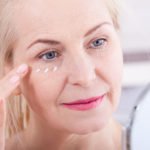
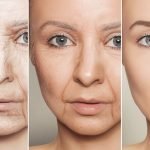






Very interesting. Is it
Very interesting. Is it possible to get a combination of the above molecules in pill form, and from who?
Thanks for the information.
Hi Manuel,
All of Jon
Hi Manuel,
All of Jon Barron's recommended formulas are on the our "Products" page above and it lists who manufactures them, if anyone. For this one, check out his L-Carnosine formula.
Thanks!
I see no product page above
I see no product page above or anywhere. I’m interested in the Carnosine product too, but it seems pretty elusive here. Any ideas?
At the top of the website,
At the top of the website, there is a link that says “PRODUCTS” and it goes to this page: http://www.jonbarron.org/dietary-supplement-recommendations. That lists all our recommended formulas so it is good to know this page. For this formula, it links to: http://www.baselinenutritionals.com/products/ever-young.php
What product page? Theres
What product page? Theres none!
See my links above. Check out
See my links above. Check out: http://www.baselinenutritionals.com/products/ever-young.php
Am interested. Getting older
Am interested. Getting older and its hard to get around.
What is pill name containing
What is pill name containing these
See my links above. Check out
See my links above. Check out: https://Www.baselinenutritionals.com/Products/Ever-Young.php
this product is good i want
this product is good i want this product immediately and how to get this product rply plzz
Hi Aurna,
Please see our
Hi Aurna,
Please see our comment reply above.
Thanks!
I would like to get the info
I would like to get the info where to get this product?
You might find this link
You might find this link useful. http://www.baselinenutritionals.com/products/ever-young.php
Is ACETYL-L-CARNITINE
Is ACETYL-L-CARNITINE contraindicated in HYPOTHYROIDISM, specifically HASHIMOTO'S disease, or in any other AUTOIMMUNE disease?
Hashimoto’s disease can
Hashimoto’s disease can actually cycle between both hypothyroidism and hyperthyroidism. That said, studies indicate that acetyl-l-carnitine can be beneficial in both cases – and specifically for Hashimoto’s.
When it comes to hypothyroidism the logic for supplementing with ALC is simple. People who are hypothyroid by definition have low carnitine levels. It is no surprise that low energy, circulation problems and a poor serum lipid profile are typical for these people. In other words, people who are hypothyroid have a particularly urgent need to supplement with both carnitine and acetyl-l-carnitine. Robert Crayhon discusses this in his book, The Carnitine Miracle: The Supernutrient Program That Promotes High Energy, Fat Burning, Heart Health, Brain Wellness and Longevity. http://www.amazon.com/Carnitine-Miracle-Supernutrient-Promotes-Longevity/dp/0871318849
For hyperthyroidism, check out http://www.lef.org/magazine/mag2007/dec2007_report_thyroid_01.htm
Thank you so much for the
Thank you so much for the information which is very interesting and therefore I am so keen to try it but the problem is: I have no idea what source of foods that will contain carnosine, or where will I obtain the carnosine from so that I can start using it before I can promote the good news to others?
I really look forward to hearing from your side as this is something that sound really helpful and encouraging.
Hi NK,
Most of these
Hi NK,
Most of these nutracueticals mentioned here you can find in supplement form. Jon lists some recommended formulas under our "product" page.
Hi, How about NGF? Is that
Hi, How about NGF? Is that even efficient in pill-form or does it have to be eyedrops? Thx for a great article. Rgds. Jacques
What are the sources of the
What are the sources of the the research studies mentioned in the excellent report please? When were they published? Where? Date? Thank you. [email protected]
What do you recommend for a
What do you recommend for a dozage for someone that is 50 years old of L-carnosine, DMAE, and acetyl-L-carnitine?
You would be looking for
You would be looking for something that provided approximately
L-Carnosine 500mg
Acetyl-L-Carnitine HCL 400mg
DMAE (Dimethylaminoethanol) bitartrate [providing 37% DMAE (29.6 mg)] 80mg
Per serving — taken three times a day
See http://www.baselinenutritionals.com/products/ever-young.php
what formula do you recommend
what formula do you recommend for a 35 year old female?
Not so simple. It depends on
Not so simple. It depends on your diet and how much meat you eat. The more you eat, since meat is high in carnosine, the less you need to supplement. But it also depends on how fast your biological clock is running. The faster it’s running, the more you’ll want to supplement. But for most women eating a normal diet, at 35 years old, you might be looking at three capsules a day of a formula similar to what Jon Barron described. http://www.baselinenutritionals.com/products/ever-young.php
Your information about
Your information about Essential Supplements plus others are indeed excellent and educationally inspirational in every aspects of life maintenance.
Thanking you so much.
John
Great information about L
Great information about L Carnosine. Just curious about where it is found or extracted prior to its supplement form. Is this a plant-based antioxidant? Thanks.
While it’s true that all of
While it’s true that all of the early research on L-Carnosine (in the early 1900’s) was carried out using L-Carnosine extracted from cattle, that’s not true of supplemental carnosine sold today. The carnosine sold in supplements is manufactured by a fermentation process using friendly bacteria which are fermented in massive vats and then harvested, processed and refined to provide 99.9% pure bio-identical L-Carnosine. The bacteria used for fermenting are a lot like probiotics, so L-Carnosine is vegetarian friendly.
I have been taking carnosine
I have been taking carnosine for two months….I consume 500mg per day. The bottle says to take it on an empty stomach….does this mean 20 minutes before food? Or, does it not assimilate into your body if taken WITH food? At 45, and pretty good health, should I take additional Carnosine?
For instructions on the use
For instructions on the use of the specific product you are taking, you need to contact the manufacturer who produces your product. However, as the article above explains, it’s more beneficial to use a carnosine based formula rather than straight carnosine.
Great article, important
Great article, important comments/questions, fabulous and timely response. The responses re-enforced my grasp of the article.
But what exactly to you mean by: “it’s more beneficial to use a carnosine based formula rather than straight carnosine.” Can one supplement with the three (3) items at the recommended dosage?
Lucien
You might find this link
You might find this link useful. http://www.baselinenutritionals.com/products/ever-young.php
Any suggestions for someone
Any suggestions for someone (my twin brother) who had dozens of lipomas removed, only to have all the surgical scars turn into keloids (even more unsightly)?
Can you comment on
Can you comment on beta-alanine? This converts into l-carnosine and is much cheaper to use. When I use it I initially get a skin itch, similar to niacin flush, but with consistent use the flush goes away.
Yes, beta-alanine
Yes, beta-alanine supplementation will raise carnosine levels – in muscle tissue. Symptoms of paresthesia, as you have already noticed, may be observed if a single dose higher than 800 mg is ingested. The symptoms, however, are transient and related to the increase in plasma concentration. They can be prevented by using controlled release capsules and smaller dosing strategies. The bigger problem is that unlike carnosine supplementation, supplementing with beta-alanine does not get significant levels of carnosine into your non-muscle tissue where most of its important benefits are achieved. You save money, but age faster. I’m not sure that’s a good trade. When you supplement with L-carnosine, it enters the bloodstream and reaches every single cell in your body.
Should the L-carnosine and
Should the L-carnosine and the carnitine supplements be spaced away from any particular vitamins or can they be taken together with one’s other vitamins?
As you can see from the
As you can see from the instructions on Baseline Nutritional’s Ever Young formula, you can take carnosine and/or Acetyl-L-Carnitine with or without food and with our or without supplements. http://www.baselinenutritionals.com/products/ever-young.php
I want to take L Carnosine
I want to take L Carnosine for my problem with High Intraocular Pressure (IOP)which will lead to glaucoma as I understand it. I read that L Carnosine should be taken with Alcar which I don’t know what that is, because of toxicity? at present I do not have medical coverage and always afraid of trying something that could have side effects and land me in the emergency w/out insurance, can you provide clarification on this? Thank you very much for bringing good news to the world.
Alcar is short for
Alcar is short for Acetyl-L-Carnitine (ALC). The article above, which was written over a decade ago, is actually the first time that it was ever recommended to take L-carnosine and ALC together. Jon Barron’s formula, now sold by Baseline Nutritionals under the name Ever Young, was the first in the world to combine these ingredients. As you obviously read above, it is not because of toxicity, but because ALC complements the action of L-carnosine, and because it helps flush lipofuscin, a byproduct of carnosine’s protective action. Unfortunately, over time people have “borrowed” some of Jon Barron’s content, but not necessarily his knowledge.
I recently lost quite a bit
I recently lost quite a bit of weight, and I have noticed that the skin on my throat and around my jaw-line isn’t as tight. Would taking L-carsonine help me? I’ve been taking primrose oil supplements for a few weeks, but I’m wondering if this would work better.
The problem isn’t carnosine.
The problem isn’t carnosine. It’s stretching of fibers.
Up until our 30's, our skin cells work well at replenishing and healing themselves. After that time, diminishing leves of collagen and elastin start to slow things down. Elasticity of the skin depends not only on healthy skin cells, but also on collagen and elastin. These fibers allow the skin to return to its original size after being stretched. Anything that helps the body regenerate collagen and elastin might be helpful.
Avocado/soybean unsaponifiables, or ASU, is certainly worth checking out. In 2006, researchers attempted to find the effects of ASU on repairing cartilage damage caused by osteoarthritis. The study, published in the "Journal of Rheumatology" found that ASU “significantly increased type II collagen.” This also helped to substantiate a 1991 study published in "Connective Tissue Research" in which feeding avocado oil extracts to rats “showed significant increases in soluble collagen content in skin.” Check out: http://www.jonbarron.org/anti-aging/barron-report-joint-pain-inflammation
Carnosine is good, but
Carnosine is good, but nothing except resveratrol exhibits the anti-aging effects of RNA/DNA supplements. I’ve been taking 1-2 grams of it per day since 1988. I’m about to turn 60, but I look 45. I have to show my driver’s license constantly to prove my age. I have no wrinkles, no sagging skin, a full head of dark hair, and only need reading glasses. It’s a pity so few people know of this remarkable supplement.
If you do a search on
If you do a search on resveratrol on our site, you will see the many articles we write about it, and Jon uses resveratrol in this formula: http://www.jonbarron.org/anti-aging/barron-report-dietary-supplements-antioxidants
PLEASE I NEED TO TAKE THE
PLEASE I NEED TO TAKE THE PRODUCT AND REVERSE MY AGING? HOW TO GET IT? HELP.
We posted the link above, it
We posted the link above, it says, “Jon Barron’s formula, now sold by Baseline Nutritionals under the name Ever Young, was the first in the world to combine these ingredients.”
How and where do we get the
How and where do we get the product??? JC.
The link is right above your
The link is right above your comment.
I had an eye check up and was
I had an eye check up and was told there is the initial start of cataracts forming in both eyes. I am 67 years old and want to avoid future possible surgery. I read that there is also a L-acetyl carnisine liquid product you apply as drops each day to your eyes. The result is that it “dissolves” the early stages of cataracts.
Is this true? Do you also produce and supply this product? If so, would you also have to take a supplement to back up the eye drops? Thanks.
Thank you so much for the
Thank you so much for the information which is very interesting and therefore I am so keen to try it but the problem is: I have no idea what source of foods that will contain carnosine, or where will I obtain the carnosine from so that I can start using it before I can promote the good news to others?
You can search online, or
You can search online, or visit Baseline Nutritionals.
I have bleeding internal and
I have bleeding internal and external haemorrhoids. Is there anything you can suggest in the way of supplements to remedy this, rather than needing to have surgery ?
Also I have perioral dermatitis is there anything you can suggest for this skin condition. I am a 59 year old female.
many thanks
The aging of our organism is
The aging of our organism is optional. If a man wants, he can prevent it and even rejuvenate the already aged body. The human organism, this energy machine created by nature, has enough power to do so. It is only necessary to assist our organism in doing it, i.e. to aim its forces of regeneration at the right direction and artificially stimulate their activity. Similar to making a weak body strong or a sick organism sound. Would you get acquainted with this theory? It has been posted in Internet. Below is the link: http://www.ncbi.nlm.nih.gov/pmc/articles/PMC2464718/pdf/11357_2005_Article_4258.pdf
Valery CHUPRIN
Independent researcher
As Jon Barron has said in his
As Jon Barron has said in his writings:
“Fundamentally, our bodies are pure energy systems. As you look more and more closely at the subatomic structure of all matter, the physical world begins to disappear. All that’s left is a series of force fields and probabilities that create the illusion of matter as we know it. Certainly, we have to deal with this illusion (the physical world) as we see it, but we also have to deal with the consequences of the world of energy that remains unseen—but is nevertheless the true reality behind all physical matter. The bottom line is that a major factor in the aging process is when these energies in our body become unbalanced or diminished in any way.”
Unfortunately, as Jon has also said, as long as we are dependent on food, water, and air to sustain us—and as long as we yell “Ow” when we hit our thumb with a hammer—we are constrained by the laws of the physical universe.
Fantastic article. Well done.
Fantastic article. Well done. I have been on Acetyl L Carnitine, with Alpha Lipoic Acid, for about a year now. It is an AMAZING supplement. I just keep getting younger, stronger and sharper.
Thank you for providing such an in-depth look at what it does.
John – What about the recent
John – What about the recent study published in the NYT linking heart disease to carnitine when metabolized by bacteria in the intestines resulting in TMAO in the blood? See article: http://www.nytimes.com/2013/04/08/health/study-points-to-new-culprit-in-heart-disease.html?pagewanted=all
Thanks.
Someday, Jon may devote a
Someday, Jon may devote a full newsletter to the topic, but for now, he told us that the key finding in the study, as stated in the article, is:
“The outcome was quite different when a vegan ate a steak. Researchers had hypothesized that vegans would not have as many of the gut bacteria needed to make TMAO, and indeed, virtually no TMAO appeared in the vegan’s blood after he consumed a steak.”
The problem is not in the carnitine, but in the intestinal flora that process it, and as Jon has stated numerous times before: regular consumption of more than 4 oz of red meat a day dramatically changes the intestinal flora.
I am 38 yr old female with
I am 38 yr old female with subclinical hypothyroidism but am not on any thyroid medications. Will the carnosine and carnitine have contraindications or benefits for my condition? I have read that carnitine can reduce thyroid hormones(which would be bad for my condition). I do not know anything about carnosine effect on thyroid.
Keep in mind that unless you
Keep in mind that unless you stop eating all fish, meat, poultry, pork, eggs, dairy, avocado, and fermented soy products, you cannot avoid carnosine and carnitine. In fact, even then, your body synthesizes both. And as far as hyperthyroidism, yes there is some research that indicates carnitine may be beneficial. But that does not mean it is harmful in cases of hypothyroidism. In fact, there are no studies that we are aware of that indicate this is so. As for carnosine, there are no studies that indicate it has any impact on the thyroid.
There is no scientific evidence to suggest that L-carnitine can be used as an alternative treatment for hypothyroidism. However, according the University of Maryland Medical Center, some research studies have indicated a benefit of L-carnitine supplementation for hyperthyroidism.
I have 2 questions regarding
I have 2 questions regarding carnosine. If I suffer from chronic fatigue, could it help with my energy levels? Also…wouldn’t it be more efficient to take a beta-alanine supplement as opposed to carnitine because carnitine is broken down into beta-alanine and histine?
Carnosine is not an energy
Carnosine is not an energy supplement. As for chronic fatigue, since the exact causes are unknown, it’s better to use a Baseline of Health approach, rather than a single supplement approach. In regard to your second question, we assume you’re talking about carnosine, not carnitine. Carnosine is formed from beta alanine and histidine, not histine. And yes, you can take beta-alanine, which can be used to create carnosine in the body. But it’s not an efficient process. If you want to raise carnosine levels in the blood, supplementing with carnosine is the better way to go.
what about beta alanine? I
what about beta alanine? I saw this:
‘When you ingest carnosine intact, most of it is broken down in the gastrointestinal (GI) tract into its constituent amino acids, beta-alanine and histidine. Some intact carnosine does escape the GI tract freely but even that amount is quickly broken down in our blood by the enzyme carnosinase. In a very short time, all the carnosine you just ingested is either eliminated or broken down into beta-alanine and histidine. These two amino acids are then taken into the muscle, where they are converted back into carnosine with the help of the enzyme carnosine synthetase.
Unfortunately, only about 40% of the carnosine you take actually contains beta-alanine, making it an inefficient source at best. You are better off, from both efficiency and a financial standpoint, taking beta-alanine directly. You would have to take substantially more carnosine just to approach the increased concentrations of carnosine achieved by taking the scientifically recommended dose of beta-alanine. Clearly, taking beta-alanine is the superior solution to increasing carnosine levels.’
The timing of your question
The timing of your question is almost perfect as Jon’s next newsletter is actually an update on carnosine. That said, your statement that beta alanine is the clearly superior solution to increase carnosine levels is not exactly correct. First, while it is true that carnosinase does indeed break down carnosine, there is not actually that much carnosinase in your body. It only takes a couple of hundred mg of carnosine to overwhelm it. As Jon wrote some years ago.
“Carnosine’s effectiveness doesn’t just build gradually. If you don’t take enough of it during the day, it simply has no effect. The reason is that carnosine is readily degraded by the enzyme carnosinase in the human body. You need to take enough to overwhelm the carnosinase so that “undegraded” carnosine can make its way to the cells of your body. The amount varies according to age and diet, but in general, for people in their mid-thirties and higher, you’re looking at 1000-1500 mg a day. If you’re younger, healthy, and include lots of meat in your diet, 500 mg a day is probably enough. But less than that, and you might as well be taking sugar pills.”
As for beta alanine, as Jon points out in his upcoming newsletter, it’s not very efficient as a carnosine builder. According to a review of the current literature published in the Jan 2010 issue of Nutrients, you need to supplement with 4.8 to 6.4 grams of beta-alanine a day to significantly increase muscle carnosine levels.
The bottom line is that if you take underpowered carnosine supplements, then, yes, beta alanine is superior. But if you take the 500-1500 mg a day supplements that Jon recommends, then no, it is not.
I am 40 age , for maximum
I am 40 age , for maximum benefit, what is the max amount of “Ever Young™” dosage i can take in one day? Whether it is possible to combine ” Ever Young™” and “Men’s Formula” ? Is it safe in my age ?
Hi Anvar,
Hi Anvar,
Great questions, please contact Baseline Nutritionals for any product related questions. They have a great customer support team.
Thanks!
On the Internet, a lot of
On the Internet, a lot of stuff about DMAE. In a number of articles on DMAE written that DMAE increases Homocysteine in the body , and DMAE can not be used in diseases of the kidney and liver, is that so?
Thank You.
DMAE is chemically similar to
DMAE is chemically similar to choline. It has two methyl groups, which means it is more likely to lower homocysteine levels than raise it. As for kidney and liver disease, there is no credible evidence that DMAE is problematic. In fact, medical warnings merely say “Maximum safe dosages for young children, pregnant or nursing women, or people with severe liver or kidney disease have not been established. (http://www.med.nyu.edu/content?ChunkIID=21390). Or consult your physician. But that would be true of any supplement if you have severe liver or kidney disease.
The article is a few years
The article is a few years old now, not sure if i will get a response. Will it suffice if i take only a combination of DMEA and L-carnosine and if i take it seperately ( seperate supplements) instead of combined in 1 formula. I am 28 years old and healthy with a healthy age management diet. Will i be overdoing with a dosage of 400mg of L-carnosine or does it only add benefit?
You can take them separately,
You can take them separately, but you do realize that they are already combined, along with acetyl-l-carnitine, in a ready-made formula designed by Jon Barron?http://www.baselinenutritionals.com/products/ever-young.php. Taking two of those capsules a day (one serving) will provide everything you need for a healthy 28 year old. Every five years you can increase that by a capsule a day, until you’re doing six capsules a day from your mid-40’s on out.
“It improves mood by 53%”
“It improves mood by 53%”
This sentence really makes no sense. What does it mean to improve a person’s mood by a percent???
Hi Nick,
Hi Nick, Not sure about your question. Mood levels can be subjectively quantified just like anything else based on what people respond to in a questionnaire. Right?
I read that carnosine also
I read that carnosine also aids in buffering lactose acid build up, which is why I first looked up carnosine. Is this true?
Yes, studies have shown that
Yes, studies have shown that carnosine can help with lactic acid build-up. In fact, Jon dealt with that issue specifically in a Q&A newsletter a couple of years ago. http://www.jonbarron.org/detox/oil-pulling-questions
Is there any possibility of
Is there any possibility of posting the references for this article? I teach a course on Alzheimer’s and would like to use this information but I need to be able to quote my sources. If they can’t be posted on this web page, any possibility you could e-mail them to me at [email protected]? Many thanks for your kind consideration of this request.
You want one of the more
You want one of the more recent articles Jon wrote on carnosine. For example: http://www.jonbarron.org/anti-aging/carnosine-benefits-supplement-research
Thank you so much. This is
Thank you so much. This is really appreciated.
I have violent reactions to
I have violent reactions to DMAE and procaine family.
can you recommend this formula without DMAE ?
i trust you . but there are so many untrustworthy companies
just to guess who might have a formula is guess work.
I have developed cateracts and don’t want surgery
Missed you so much when you left Healing America. Of course I left also when everything fell apart.
If you already have cataracts
If you already have cataracts, then you might want to take a closer look at the carnosine-based eye drops, which do not contain DMAE. There are several companies that make them.
I started taking acetyl l
I started taking acetyl l-carnitine after reading a post about how it could protect the myelin sheath and perhaps even reverse damage to it. Since glossoharyngeal neuralgia may be a result of weakening of the myelin sheath, I thought it might be helpful. I’ve suffered with this for years, off and on. Soon after I started taking acetyl l-carnitine, I had a new series of pain attacks. Since I couldn’t swallow without jabbing pain in my ear, I stopped taking all supplements. My anti-seizure medication had to be dissolved in my mouth to get it in my system. I have since learned that acetyl l-carnitine can exacerbate any seizure disorder and can interfere with anti seizure medication. Please make sure this information gets out to your readers.
Virtually every supplement
Virtually every supplement from a responsible company contains a warning on the label that says something to the effect: Consult your physician if you are pregnant, nursing, taking medication or have a medical condition. Your situation was covered by two of those conditions. You were under a physician’s care, and you were taking seizure medication. Check the label on the acetyl l carnitine you purchased and see if the warning is there.
Can Ever Young help with all
Can Ever Young help with all the spots coming on my body even after years of no sun exposure. I have eaten a lot of sugar in my lifetime and still eat too much. I was wondering if that could be a contributing factor.
Sun spots are not the same as
Sun spots are not the same as lipofuscin discolorations. Sun spots represent actual damage to the skin. An l-carnosine based formula can help with the lipofuscin, but not so much with the sun spots.
I am 84 years old, Have type
I am 84 years old, Have type 2 diabetes, and high blood pressure (in the 150s-160s). Will this formula (in the article above with the carnosine et al) help with any of these conditions?
Please clarify the following
Please clarify the following statement made in the description of Carnosine.
“As I said before, by itself, lipofuscin is not harmful. However, if enough of it accumulates over time (and this process is accelerated when you supplement with carnosine), it can interfere with proper cellular and organ functions. So the bottom line is that however it is produced (as a result of protein damage, or as the result of taking sacrificial carnosine to prevent protein damage), you want to get rid of it.”
How do you get rid of lipofuscin?
The next two sections of the
The next two sections of the report on DMAE and Acetyl-l-carnitine answer that question. To quote: